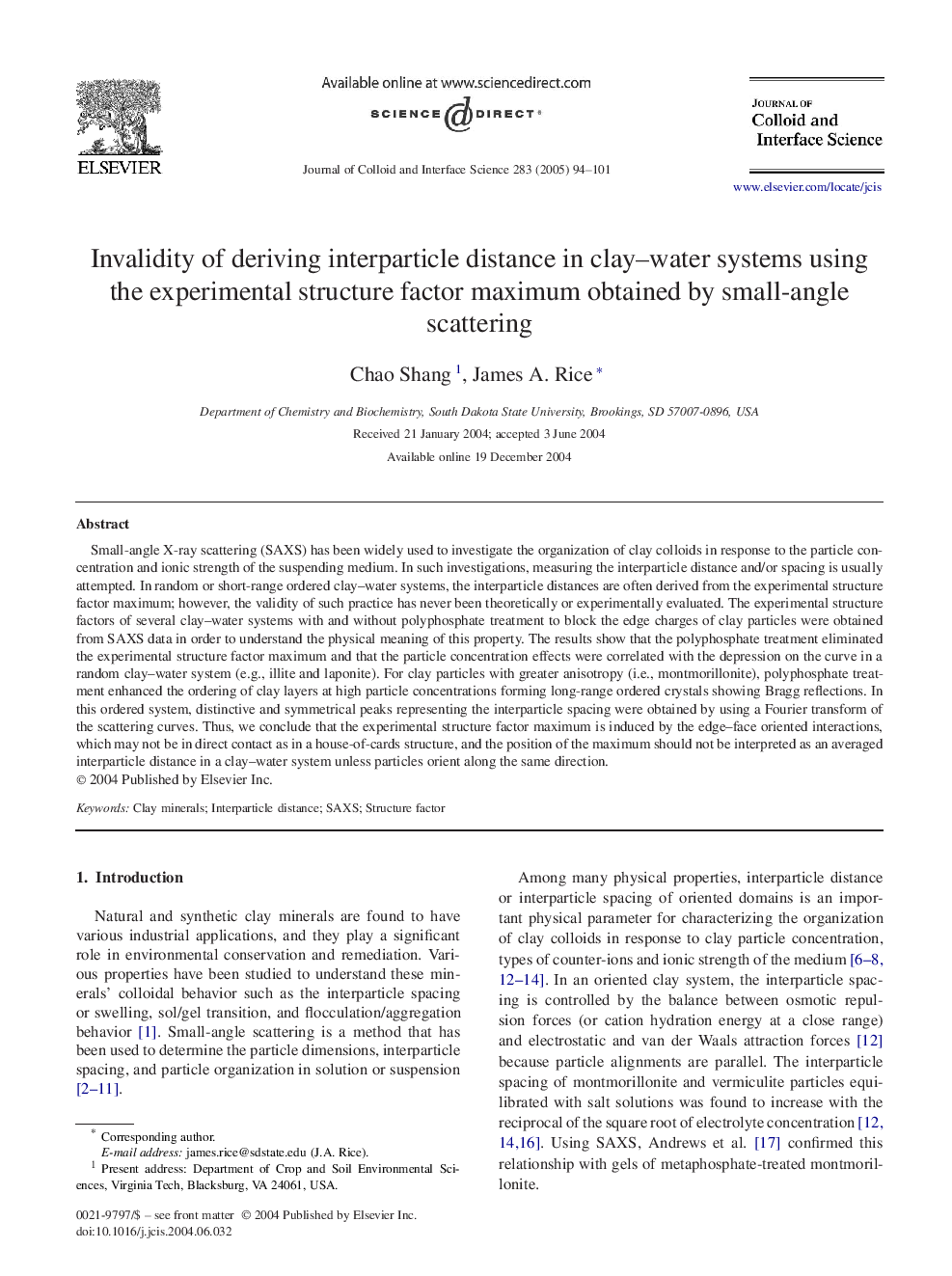| Article ID | Journal | Published Year | Pages | File Type |
|---|---|---|---|---|
| 10378456 | Journal of Colloid and Interface Science | 2005 | 8 Pages |
Abstract
Small-angle X-ray scattering (SAXS) has been widely used to investigate the organization of clay colloids in response to the particle concentration and ionic strength of the suspending medium. In such investigations, measuring the interparticle distance and/or spacing is usually attempted. In random or short-range ordered clay-water systems, the interparticle distances are often derived from the experimental structure factor maximum; however, the validity of such practice has never been theoretically or experimentally evaluated. The experimental structure factors of several clay-water systems with and without polyphosphate treatment to block the edge charges of clay particles were obtained from SAXS data in order to understand the physical meaning of this property. The results show that the polyphosphate treatment eliminated the experimental structure factor maximum and that the particle concentration effects were correlated with the depression on the curve in a random clay-water system (e.g., illite and laponite). For clay particles with greater anisotropy (i.e., montmorillonite), polyphosphate treatment enhanced the ordering of clay layers at high particle concentrations forming long-range ordered crystals showing Bragg reflections. In this ordered system, distinctive and symmetrical peaks representing the interparticle spacing were obtained by using a Fourier transform of the scattering curves. Thus, we conclude that the experimental structure factor maximum is induced by the edge-face oriented interactions, which may not be in direct contact as in a house-of-cards structure, and the position of the maximum should not be interpreted as an averaged interparticle distance in a clay-water system unless particles orient along the same direction.
Related Topics
Physical Sciences and Engineering
Chemical Engineering
Colloid and Surface Chemistry
Authors
Chao Shang, James A. Rice,
